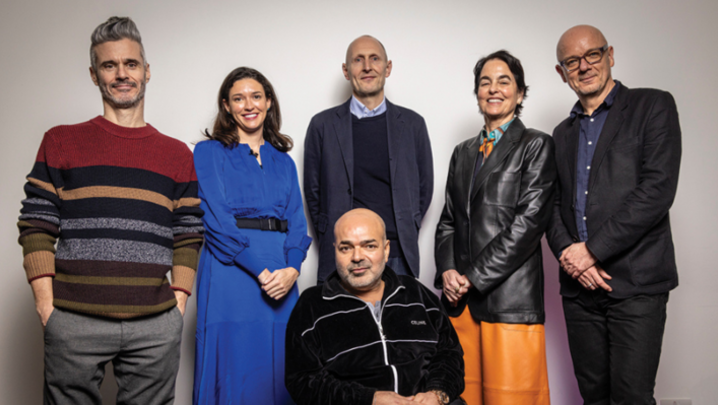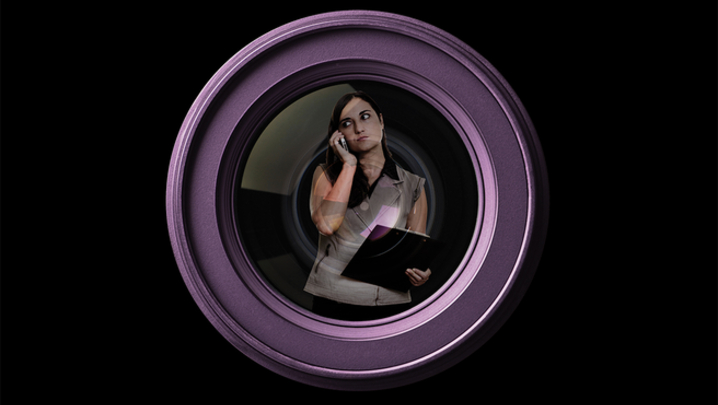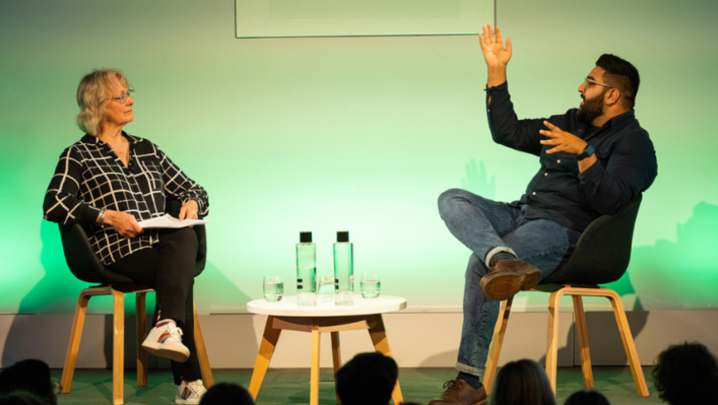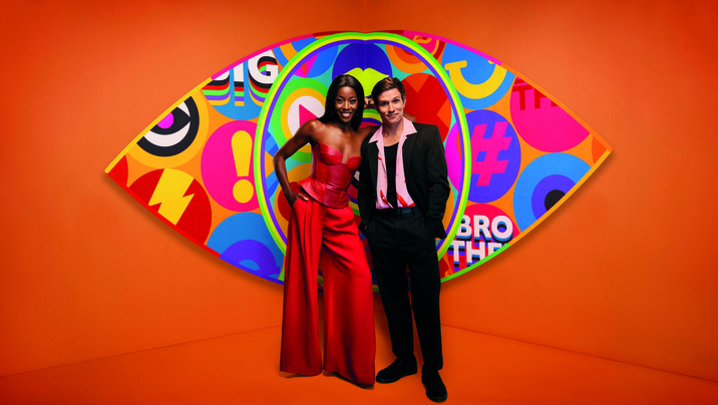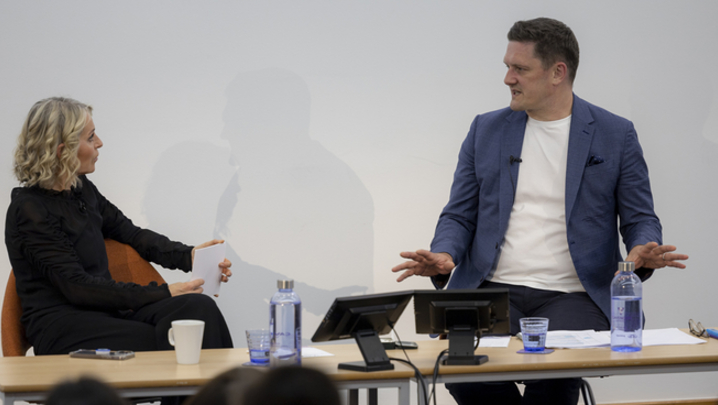Oscar-nominated documentary-maker Andrea Nevins reveals the hidden dramas behind an international icon. Steve Clarke is hooked
Some feminists might choke at the idea that the highly controversial Barbie doll was actually invented by an ardent feminist. This was one of many fascinating insights to emerge from an RTS event devoted to a new feature-length documentary Tiny Shoulders: Rethinking Barbie.
The film examines the changing face of Barbie from a feminist – and occasionally anthropological – perspective since the doll’s debut in 1959.
This sophisticated, thoughtful and insightful 90-minute documentary premiered to strong reviews at the Tribeca Film Festival earlier this year before making its debut on the US streaming service Hulu in April. Variety praised the film as “illuminating and thought-provoking”.
Contributors to Tiny Shoulders: Rethinking Barbie, distributed by Entertainment One, include American feminists Gloria Steinem, Roxane Gay and Peggy Orenstein (the author of Don’t Call Me Princess).

The story of Barbie began in the second half of the 1950s, when Ruth Handler, whose husband Elliot had founded Mattel Toys in 1945, found the inspiration for what became Barbie (unusually, a doll with breasts) in a cheap German sex toy called Lilli, bought by men at tobacconists.
Over the decades, many different types of Barbie dolls and Barbie fashions have been sold. These include a Barbie presidential candidate (the party was undefined) and a Barbie astronaut but, much to the consternation of feminists, the toy’s defining characteristics – blue-eyes, impossibly skinny and blonde – remained steadfastly unchanged.
Critics of Barbie complained that the doll’s body was so thin that she lacked the body fat to menstruate. There were occasional modifications, such as to her skin tone and eyes – famously, the latter were altered so they looked straight ahead, rather than downwards.
However, it was not until 2016 that radical change took place and the “Curvy”, “Petite” and “Tall” Barbie dolls first appeared on the shelves.
The development of these new designs, collectively known as Project Dawn, and Mattel’s anxiety about the launch – particularly in the PR department – provides Rethinking Barbie with its storyline.
As the RTS audience heard, film-maker Andrea Nevins struck lucky when she managed to persuade Mattel to allow her inside its El Segundo HQ in Los Angeles county and observe the mainly female team at work.
“It was a complete surprise [when I found out about Project Dawn],” she said. “They didn’t know they were going to succeed. They were allowing me in to watch them potentially fail.”
How, then, did she persuade Mattel to give her this privileged access? Her previous work has focused on subjects such as Hillary Clinton and Jesse Jackson (made for A&E), and she directed HBO’s State of Play: Happiness, which looked at how successful NFL players cope with everyday life once they retire.
“It took Mattel a long time to convince the team to tell this story because they never let anybody inside those doors,” she recalled. “Honestly, going inside the Barbie vault – there are people working at Barbie who have never been inside.
“And, as I was investigating and observing, I saw a lot of women running a huge corporation and making some very serious decisions about what it means to be a woman in today’s society.
“I thought that was an extraordinary thing to be able to observe. And it would say something about where our society is today.”
Brought up by a mother who was a specialist in art history and her surgeon husband, Nevins attended Harvard before embarking on her media career. Her first job was working as a sports reporter in North Carolina.
Why do people have such incredibly strong feelings about this piece of plastic?
“I was not a Barbie girl,” she said. “I had one but she was part of a large ecosystem of many, many toys. So, my starting point was: ‘Why do people have such incredibly strong feelings about this piece of plastic?’ Why is it that you can talk to almost anyone and they’ll tell you their Barbie story, or about how much they hate her or how much she’s influenced them or shaped their careers. My big question was why?”
Nevins added: “For me, growing up as the daughter of a feminist, and as a feminist myself, I had complicated feelings about why I also liked pretty dresses. Was that OK? I also had complicated relationships with the men I was working with and some #MeToo moments myself.
“I thought there should be more investigation into where women are in the world. But I didn’t want it to be a dry rendition of the past 60 years of feminism. What better way than to look at an icon that we all know, which we all love and which we have all played with.”
Nevins said that she had complete editorial control over Rethinking Barbie, and acknowledged her lucky timing in approaching Mattel. “I went and knocked on the door and they were at a very, very dark moment. So dark that, when they saw this movie two or three years after I’d started it, they were like, ‘You never said that we were in a bad place.’
“I think that they were in this place where they really felt that they needed to let outside light in. There was a disconnect between what they felt they were saying and how the rest of the world perceived them.”
Joining her at the RTS event was Kim Culmore, the Barbie designer responsible for the doll’s new iterations. She is a key presence in the film, as is her colleague, communications chief Michelle Chidoni. We witness the creative tensions between the two.
Culmore told the RTS that the experience of Project Dawn was “an important story for [all people] who run businesses”. She emphasised that “diversity and inclusion aren’t just the right things to do for humanity, they also equal good business. Corporations have a key role in changing our world.”
She added: “I signed up to be a designer, not a documentary subject. It’s uncomfortable and you are very vulnerable. I can’t speak for the company on why they chose to do it.
Many people still don’t know the foundational origin of the brand came from an extraordinary feminist perspective
“I know how important it was to us as a Barbie team.… Many people still don’t know that we’ve made these changes. Many people still don’t know the foundational origin of the brand came from an extraordinary feminist perspective.
“Ruth [Handler] was a businesswoman who couldn’t sign cheques at her own company.
“We stand on that very feminist foundation and do our best to leave the brand better than it was when we stepped into our roles.”
Even in these times, when content production is booming, finding the money for high-end documentary can be a struggle. Fortunately, Nevins had money in the bank from her two previous films. “We self-financed,” she said. “Subsequently, Hulu came on board as a partner. By then, we were in the edit, so they knew what the end of the story was.
“What they didn’t know was that Trump was going to be elected, that we were going to have a pussy-grabbing moment and a #MeToo moment.”
So, in the wake of what turned out be a successful relaunch, where does Barbie stand in the age of #MeToo? In our fast-moving culture, how does Barbie keep up?
“It gives you a lot to work with,” said Culmore. “Obviously, I can’t talk about what’s next for Barbie. I can talk about what we’ve done, which is instilling the bodies across the line, not just the Fashionista Dolls.
“We do close to 500 or so dolls a year. The Fashionista line is a very tiny part of that – although, financially, one of our biggest.
“We’ve introduced role-model dolls.… We are committed to maintaining our positon as the most diverse and inclusive doll line in the world.
“[We want] young girls to have the opportunity to tell their stories with a broader range of characters and images. The images that we put into the hands of children matter.”
No one could disagree with that, not even Barbie’s harshest critics.
‘On Tiny Shoulders: Rethinking Barbie’ was screened by the RTS at the Soho Curzon cinema in London on 7 November. Andrea Nevins and Kim Culmore were interviewed by Caroline Frost.



